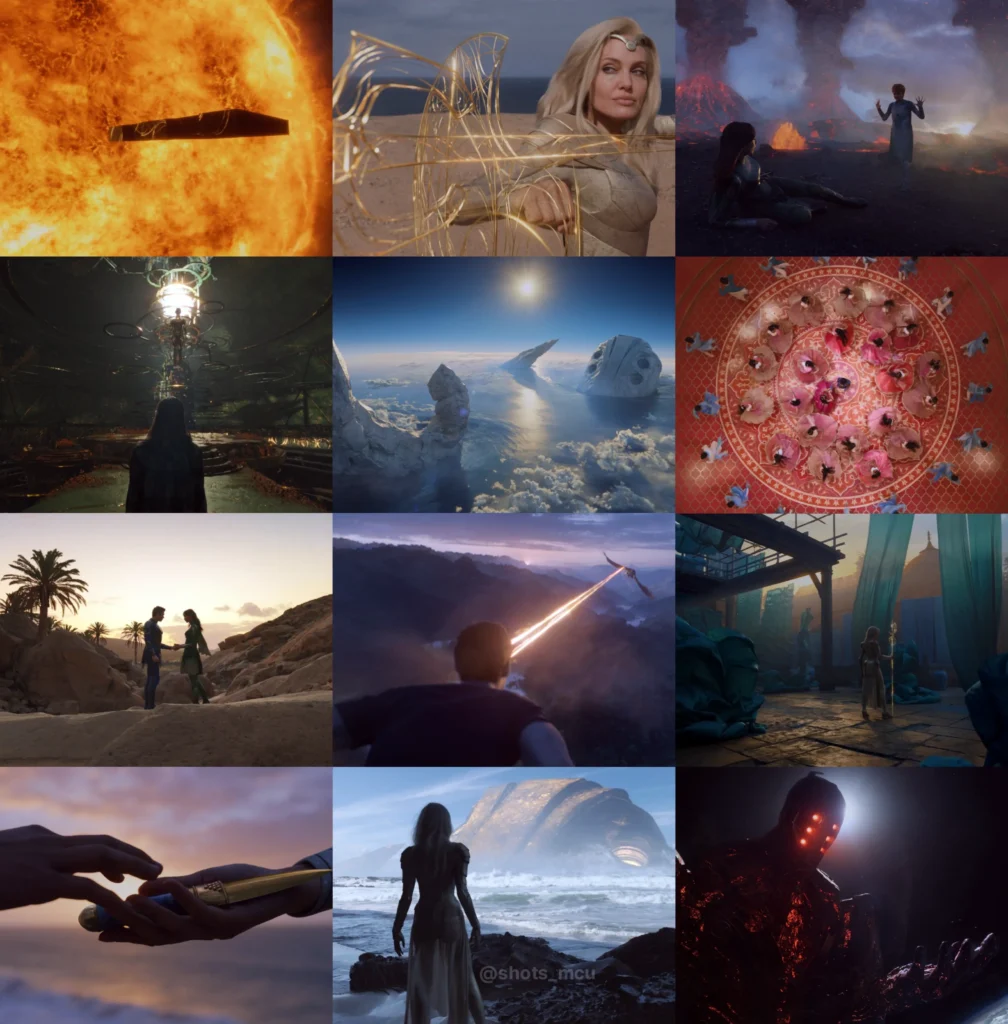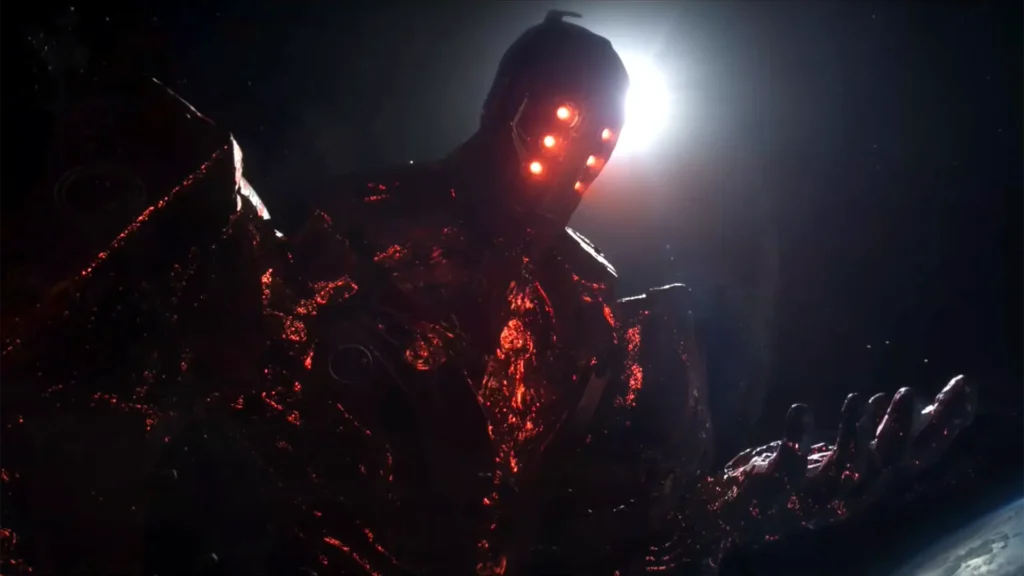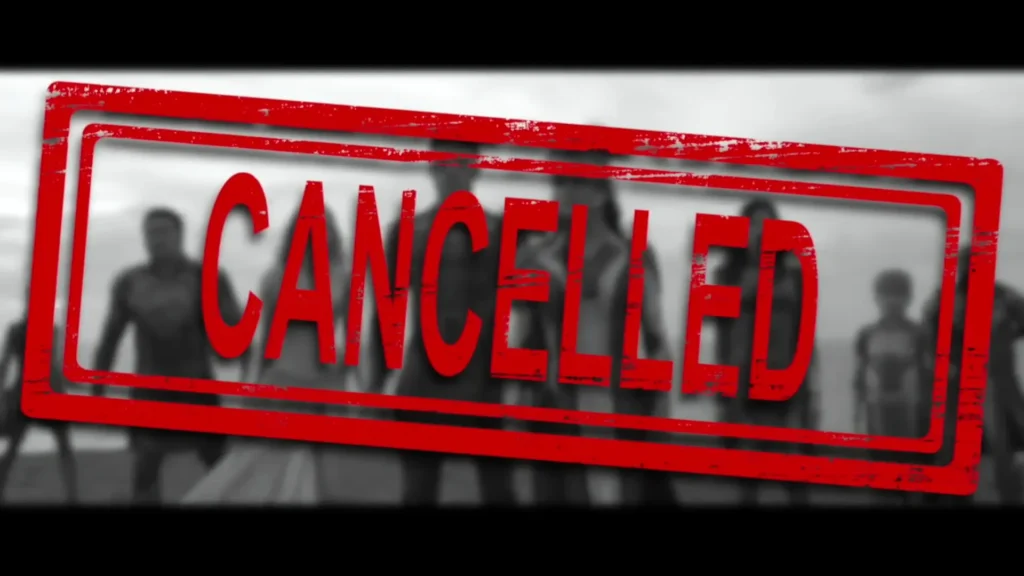Marvel Studios has been a powerhouse of creativity and risk-taking, captivating audiences worldwide with innovative storytelling and dynamic characters. Yet, recent years have seen the studio falter, making questionable decisions that have led to disappointing results. One of the most glaring missteps is the cancellation of Eternals 2. Despite mixed reviews for the first installment, the franchise brims with untapped potential and unique storytelling opportunities that could elevate the Marvel Cinematic Universe (MCU) to new heights.
The decision to shelve Eternals 2 reflects a troubling shift in Marvel’s approach—moving away from bold risks to favoring safe, guaranteed hits. This article explores why Eternals 2 deserved a second chance, what the first film did right, and how Marvel’s aversion to risk could impact its future.
The Underappreciated Potential of Eternals
Marvel’s decision to bring Academy Award-winning director Chloé Zhao on board was a testament to its commitment to elevating superhero cinema. Known for her work in character-driven dramas like Nomadland, Zhao brought an intimate, almost poetic sensibility to Eternals. Her choice to film on location and use natural lighting gave the movie a unique visual identity, setting it apart from other Marvel productions.
The film’s ambition was evident from the outset. Zhao sought to blend mythology, philosophy, and the grandeur of the Marvel Universe. The opening moments, with a cinematic shot of the sun and a text crawl reminiscent of ancient scriptures, showcased her vision for a more profound and layered narrative.

The first 10 minutes of Eternals set a high bar. The arrival of the Eternals’ ship, inspired by the monolith from 2001: A Space Odyssey, was breathtaking on the IMAX screen. The sequence successfully captured the awe and wonder of mythological storytelling. The battle between the Eternals and the Deviants introduced the team and their powers in a visually stunning and narratively effective way.
This opening hinted at a film willing to challenge Marvel’s formulaic tendencies. It promised a story of god-like beings grappling with their roles and beliefs—a premise filled with possibilities.
Eternals dared to ask weighty questions: What happens when gods lose faith in their purpose? How do immortals reconcile with humanity’s imperfections? These philosophical underpinnings made the film feel more like a work of science fiction than a typical superhero flick. Zhao’s ambition to tell a story of cosmic proportions, layered with personal struggles, demonstrated the franchise’s potential to explore uncharted territory in the MCU.
What Worked in Eternals
Eternals boasted one of the most diverse and talented ensembles in MCU history, featuring the likes of Angelina Jolie, Richard Madden, Kumail Nanjiani, and Salma Hayek. The relationships between the characters were particularly compelling. Thena and Gilgamesh’s bond, for instance, offered a tender portrayal of loyalty and care rarely seen in superhero films. Similarly, Makkari’s depiction of super-speed brought fresh energy to the genre, setting a new standard for how such powers can be visualized.

The visual design of the Eternals’ abilities was another highlight. Each character’s powers, from Ikaris’ laser vision to Druig’s mind control, had a distinct aesthetic that enhanced the film’s identity. The choice to tie their abilities to ancient myths and legends added depth to the Marvel Universe’s history.
As a history buff, Zhao used Eternals to weave the Marvel Universe into humanity’s past. Scenes set in ancient Mesopotamia and the Hanging Gardens of Babylon grounded the Eternals in our collective mythology. These elements not only enriched the characters’ backstories but also expanded the MCU’s scope in fascinating ways.
What Went Wrong with Eternals
Despite its ambitious themes, Eternals struggled with tonal inconsistency. Moments of profound seriousness were often undercut by misplaced humor. For instance, Phastos’ heartbreaking backstory, marked by his loss of faith after Hiroshima, was followed by a quip about IKEA furniture. Such comedic beats clashed with the film’s heavier narrative threads, diluting its emotional impact.
The film’s structure was another weakness. After its brilliant opening, the story skipped thousands of years, relying heavily on flashbacks to fill in the gaps. The need to introduce ten main characters while unraveling a complex plot made the narrative feel disjointed. The “getting the band back together” approach dragged the pacing, leaving little room for individual characters to shine.

While Eternals had a large, impressive cast, its runtime didn’t allow for meaningful development of many characters. Phastos, Makkari, and Druig, in particular, deserved more screen time to explore their motivations and relationships. A TV series format could have allowed these characters to breathe and given their stories the attention they needed.
Financial and Critical Reception
Released in 2021 during the pandemic, Eternals faced an uphill battle at the box office. With a production budget of $232 million after tax breaks, it earned $400 million globally—a figure comparable to Shang-Chi’s performance in the same year. While not a blockbuster hit, the numbers were respectable given the circumstances.
Despite earning less than early MCU entries like Thor and Captain America: The First Avenger, Eternals outshone them in ambition and scope. However, its lower Rotten Tomatoes score (47%) and mixed audience reception marked it as a divisive film, which likely influenced Disney’s decision to halt a sequel.
Marvel’s marketing positioned Eternals as a potential Oscar contender, a strategy that backfired when critics panned it. The studio’s decision to lift the review embargo early and promote the film as prestige cinema created an expectation it could not meet. The fallout from this misstep led to a loss of confidence in the franchise.
Why a Sequel Could Succeed
Marvel has a proven track record of improving underwhelming first installments with stellar sequels. Captain America: The Winter Soldier and Thor: Ragnarok are prime examples. By refining the formula and leveraging audience feedback, Eternals 2 could address the shortcomings of its predecessor and deliver a crowd-pleasing experience.

The first Eternals film set up a rich foundation for future stories. The unresolved cliffhangers—Arishem’s judgment, the team’s division, and the introduction of Starfox and Pip the Troll—demand resolution. A sequel could delve deeper into these threads while introducing new cosmic characters and settings.
Fans were left intrigued by the introduction of Starfox, played by Harry Styles, and his connection to Thanos. Exploring his dynamic with the Eternals and his quest to free more Celestials could form the backbone of an epic sequel. With the right creative team, these elements could propel Eternals 2 to critical and commercial success.
The Potential of the Eternals Franchise
The Eternals offer a gateway to the Marvel Universe’s cosmic side, an area with boundless storytelling opportunities. By exploring Celestials, cosmic deities, and otherworldly civilizations, the franchise could redefine what audiences expect from the MCU.
The Marvel Comics lore includes a wealth of characters tied to the Eternals, such as Kronos, Eon, and the Universal Church of Truth. Introducing these elements could enrich the franchise while appealing to hardcore fans.
The Eternals’ connections to established characters like Thor and Star-Lord present exciting crossover possibilities. These interactions could inject fresh energy into the series and draw in a wider audience.
Risks and Rewards of Eternals 2
Marvel Studios was born out of risk-taking. Casting Robert Downey Jr., a once-troubled actor, as Iron Man was a gamble that paid off in spades. Building the interconnected universe culminating in The Avengers was unprecedented at the time. Marvel’s willingness to embrace unconventional ideas, such as Guardians of the Galaxy, turned what could have been niche stories into mainstream hits.
Eternals 2 would be another risk worth taking. The foundation laid by the first film offers enormous potential, and with the right adjustments, the sequel could easily become a franchise cornerstone.
Marvel’s history is rich with examples of turning underperforming films into iconic franchises. After a lukewarm reception for Thor and Captain America: The First Avenger, their sequels (The Dark World and The Winter Soldier, respectively) refined their characters and stories. By analyzing what didn’t work in Eternals—the pacing, tonal inconsistencies, and underdeveloped arcs—Marvel can create a sequel that satisfies both critics and fans.
Investing in Eternals 2 would signal that Marvel still values creativity and innovation. The studio has built its reputation by collaborating with visionary directors and storytellers. A successful sequel could reinstate trust among fans and creatives, proving that Marvel still knows how to push boundaries.
The Cancellation of Eternals 2
Disney CEO Bob Iger’s recent comments about focusing on “stronger franchises” reflect a significant shift in Marvel’s strategy. Reports suggest that Iger viewed Eternals 2 as a risky venture unlikely to yield immediate financial rewards, especially after the underwhelming performance of The Marvels and Quantumania.

Industry insiders have revealed that the sequel was shelved due to fears it would be a “guaranteed flop.” Disney’s financial concerns, combined with the increasing costs of blockbuster production, played a critical role in the decision.
The cancellation of Eternals 2 underscores a troubling trend—Marvel is prioritizing short-term profitability over long-term storytelling. This risk-averse approach could stifle innovation, leading to creative stagnation and audience fatigue.
The Dangers of Playing It Safe
Marvel’s recent reliance on nostalgia—such as bringing back Hugh Jackman’s Wolverine and Robert Downey Jr.’s Iron Man—raises concerns about its creative direction. While these moves excite fans in the short term, they do little to expand the universe or introduce fresh ideas.
Warner Brothers’ overreliance on Batman films at the expense of other DC characters offers a cautionary tale. By focusing on familiar properties, Warner Bros. neglected its wider universe, leading to a lack of variety and diminishing returns. Marvel risks falling into the same trap if it abandons its tradition of taking risks on lesser-known characters.
A “play it safe” strategy transforms Marvel from a storytelling powerhouse into a content mill. The MCU’s strength lies in its interconnected universe and willingness to experiment. Abandoning these principles for guaranteed hits risks alienating audiences and eroding the franchise’s legacy.
Why Risk-Taking Is Vital for Marvel’s Future
The Eternals’ creator, Jack Kirby, was a visionary whose imagination expanded the limits of comic book storytelling. His cosmic epics, including The New Gods and Silver Surfer, introduced readers to grand themes of divinity and morality. Marvel must honor this legacy by continuing to take risks and telling bold, imaginative stories.
The MCU’s interconnected nature is its greatest asset. By exploring new characters and narratives, Marvel can keep the universe dynamic and engaging. Risk-taking allows for the kind of creative growth that has defined Marvel’s most successful projects.
Repetition is the death of creativity. Marvel’s future depends on its ability to evolve and adapt. Taking risks with projects like Eternals 2 could breathe new life into the franchise and prevent the fatigue that comes with relying too heavily on established formulas.
Opportunities Lost with Eternals 2
The Eternals cliffhanger teased a larger cosmic conflict involving Arishem, Starfox, and the Celestials. A sequel could have explored the moral dilemmas of the Eternals as they freed their kind while grappling with their creators’ judgment.
The Eternals are uniquely positioned to delve into Marvel’s cosmic mythology. From the origins of life in the universe to the machinations of god-like beings, a sequel could have significantly expanded the MCU’s scope.
Starfox’s introduction was a tantalizing glimpse of what could come. As Thanos’ brother, he offers a unique perspective on the Celestial saga. Coupled with Patton Oswalt’s Pip the Troll, the character promised a blend of humor and cosmic adventure that remains untapped.
The Need for Creative Freedom at Marvel Studios
Marvel’s early success came from trusting directors like James Gunn, Taika Waititi, and the Russo brothers to bring their unique visions to the MCU. To recapture that magic, the studio must empower creatives to take risks without excessive interference.
While profitability is essential, Marvel’s long-term success depends on balancing financial considerations with artistic integrity. Supporting ambitious projects like Eternals 2 demonstrates confidence in the brand’s ability to deliver high-quality content that resonates with audiences.
The MCU’s identity is built on innovation and interconnected storytelling. By fostering creativity and embracing risk, Marvel can continue to redefine what’s possible in blockbuster filmmaking.
Conclusion
The decision to cancel Eternals 2 is a missed opportunity for Marvel Studios to grow creatively and expand its universe. The first Eternals film laid a foundation of ambition and potential, even if it stumbled in execution. A sequel could have addressed these shortcomings, delivered on its cliffhangers, and opened the door to new stories and characters.
Marvel’s shift toward risk-averse decision-making threatens to undermine the very qualities that made the MCU a global phenomenon. By prioritizing nostalgia and safe bets, the studio risks alienating fans and stagnating creatively.
For Marvel to thrive, it must embrace the spirit of innovation and boldness that defined its early years. Eternals 2 represents more than a continuation of a franchise—it’s a chance for Marvel to prove that it still has the courage to take risks and tell groundbreaking stories.
FAQs About Eternals 2
1. Why was Eternals 2 canceled?
Marvel Studios decided to cancel Eternals 2 due to financial pressures and a shift in strategy under Disney CEO Bob Iger. Reports suggest that the disappointing performance of recent Marvel films like Quantumania and The Marvels influenced the decision. Disney now appears to focus on “guaranteed hits” rather than investing in riskier, less-established franchises.
2. Was Eternals really a failure?
Not entirely. Eternals earned $400 million globally during the pandemic era, comparable to Shang-Chi. While it wasn’t a runaway hit, the movie performed reasonably well given its release circumstances. The critical reception, however, was mixed, with a 47% Rotten Tomatoes score that hurt its reputation.
3. What would have made Eternals better?
Several factors could have improved the film, such as a more consistent tone, better pacing, and deeper character development. Expanding the story into a TV series or focusing on fewer characters might have allowed the narrative to breathe and resonate more effectively with audiences.
4. Could Eternals 2 still happen?
It’s possible, but unlikely under Disney’s current strategy. However, fan demand, creative lobbying, and future MCU developments could reopen the door for an Eternals sequel. Marvel has revived dormant franchises in the past, so hope remains.
5. What does the cancellation of Eternals 2 mean for other Marvel franchises?
The cancellation signals a shift in Marvel’s priorities, favoring established characters and franchises over new ones. This could lead to fewer risks being taken on unique stories, limiting the creative diversity that has defined the MCU.
6. How can fans support creative risks in Marvel films?
Fans can support innovative storytelling by championing underdog films and characters, engaging in constructive dialogue online, and showing up for bold projects at the box office. Making voices heard in favor of creative risks can influence studio decisions.
